Why many Olympic athletes have early birthdays
Older kids in any year tend to be picked first for teams, giving them edge in training and competing
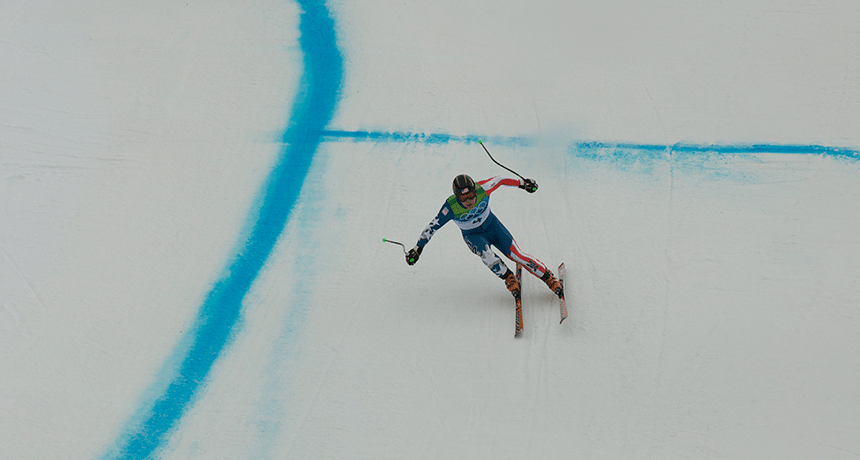
Andrew Weibrecht races downhill at the 2010 Winter Olympics in Vancouver, Canada. He turned 32 at the 2018 Winter Olympics on February 10.
Kevin Pedraja/Wikimedia Commons (CC BY 2.0)
In a curious coincidence, two members of the U.S. men’s Olympic alpine ski team will celebrate their birthdays during the Winter Games in PyeongChang, South Korea. Another five of them will be lighting birthday candles in the two months surrounding the event.
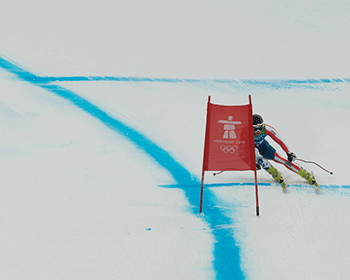
This could be random chance. Or not. The way that coaches pick teams when kids are very young could give an advantage to those born at a certain time of year. Slightly older kids will be just a bit bigger than younger teammates born the same year. In many sports, that difference is a bonus. But it means coaches might tend to leave younger kids on the bench.
This can give older kids a small advantage in sports. And what starts in childhood may continue on throughout their sports career. No one doubts that professional athletes work hard and are extremely talented. But in sports like hockey, skiing and soccer, many players tend to be born around the same time of year. This early birthday boost is known in science as the “relative age effect.”
Late bloomers shouldn’t despair, though. Given some time to grow, later-birthday kids might equal — and even surpass — older teammates.
Birthday bias
Older kids get a boost both on and off the field, says Nick Wattie. He studies the science of sports in Canada at the University of Ontario Institute of Technology in Oshawa. Older kids often get better grades, for instance, and are more likely to be identified for gifted programs.
But the effect is easiest to spot in sports. Early-birthday athletes get professional careers in sports more often in swimming, soccer and hockey, studies show. “Older athletes may look more talented because they are faster, stronger,” says Joe Baker. He studies sport science at York University in Ontario.
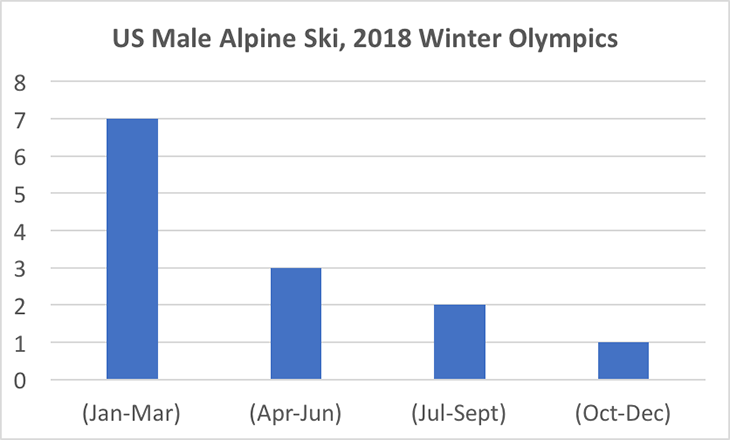
Not every sport favors the slightly older kids. For example, American football doesn’t have a strong birthday bias, Wattie says. “In youth football, you’ve got age and height and weight categories,” he notes. “So even if you’re smaller, you still have a chance to play and have a good experience.” That good experience means younger football players might stick with it — and their talents may be eventually spotted — as they grow older.
Other sports show no age advantage because they don’t rely on the same types of speed or size. In gymnastics and figure skating, for example, younger kids actually may have the advantage because they can be more flexible. And shorter kids may be better suited to the leaps, turns and flips that wow the crowd to win the gold in these sports, says Baker.
Gender also may play a role, Wattie notes. Men’s sports seem to show a birthday bias more than women’s. Perhaps this is because girls finish growing sooner than boys. “So by the time you’re 13 to 16, and competition begins to heat up among future pro athletes, things have balanced out,” Wattie suspects.
Growing out of it
Boys can catch up, too, once they reach adult size, notes James Salter. He is a coach with Swimming Australia. This group governs competitive swimming in Australia. (Salter also competed for Great Britain in swimming in the 1996 and 2000 Summer Olympics.)
In swimming, size matters. So age also matters. The slightly longer arms and legs of somewhat older kids helps them swim farther and faster with less energy. But Salter and his colleagues have found that this effect exists only for boys between 12 and 15 and for girls between the ages of 12 and 14. By 16, the younger kids have grown up — and caught up in the pool. These findings appeared December 29 in the Journal of Science and Medicine in Sport.
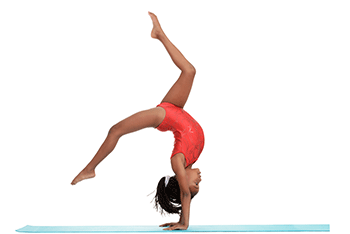
“Among the youngest kids, many won’t manage to make it,” says Luca Fumarco. He studies economics at the National Institute of Statistics and Economic Studies in Luxembourg. But if those younger, smaller players stick with it, talent may eventually trump age.
In the North American National Hockey League, for instance, more players are born in the spring, Fumarco and his colleagues find. But players with later birth dates who did make it into the pros scored more points. They also made more money — as much as 51 percent more than their older teammates.
Fumarco and his colleagues published their findings August 14 in PLOS ONE.
“Some of them, because they are naturally more skilled, they manage to be selected or to find more time on the ice,” Fumarco notes.
Science for the underdog
Coaches want to find the most talented athletes for their teams. They don’t want to make a mistake and leave a potential world record holder sitting on the bench. But fighting birthday bias isn’t easy. Should coaches divide up teams into smaller and smaller age groups? Should they sort everyone by weight, like youth football teams?
“There have been a bunch of suggested solutions put forward but no evidence to show that any of them work,” says David Mann. He specializes in sport science at Vrije University Amsterdam in the Netherlands.
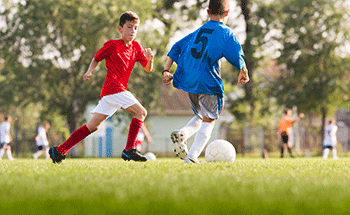
Mann tested one potential solution on the field. He filmed 10-year-olds playing four-on-four soccer. The kids all wore numbered shirts. Each number denoted the player’s age relative to the rest of the team. Player one was the oldest on the field, player two the second oldest. Player eight was the youngest.
He then showed the video to 25 soccer talent scouts. He asked them to pick the most talented kids from the field of eight. (Don’t worry, it wasn’t real. No one was picked for a soccer team, or booted off, for science.) Mann instructed one group of scouts simply to identify the best players. He gave another group a list of the players, with birthdates. The others were told what those numbers on the kids’ shirts meant.
The first group of scouts chose the oldest kids. Scouts with a list of names and birthdays also tended to select older kids. But when scouts knew the meaning behind the numbers on the players’ backs, their behavior changed. The preference for the oldest players disappeared. Mann and his colleagues published their finding two years ago in the Journal of Sports Sciences.
Age bias may be worth fighting. “My job is to provide these athletes with the opportunity to be successful,” says Salter, the swimming coach. To do that, he must ensure he does not overlook kids just because of their age.
It’s also important, he notes, to keep this bias in mind so that slightly younger kids don’t get ignored or sidelined — and quit — before their skills shine. “We have to provide different opportunities so they have a positive experience in the sport,” he says. “No one wants to [compete] if they’re not enjoying it.”
Age is “not a seal on someone’s fate,” though, says Wattie. Other factors such as access to sports equipment, teams, coaches and supportive parents can play a more powerful role. And the biggest difference of all? Practice.







